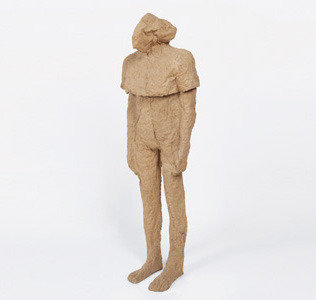Magdalena Abakanowicz
dal 19/11/2012 al 29/1/2013
Segnalato da
19/11/2012
Magdalena Abakanowicz
Akbank Sanat, Istanbul
The Human Adventure. The artist is either delving into the inner problematics of the work itself, redefining a problem deliberated earlier, or integrating the work at hand with the remote references of art with the details of the background that constitute art.

Curated by Hasan Bulent Kahraman
Some artworks could not be explained in and of themselves by the intrinsic artistic qualities that they hold. The miracles inherent to the form itself are of course primal for the work of art. Any work of art disregarding that would be ontologically problematic. However, sometimes the constituent elements that make up that form and their genealogy stand out. The artist is either delving into the inner problematics of the work itself, redefining a problem deliberated earlier, or integrating the work at hand with the remote references of art with the details of the background that constitute art.
The work of Abakanowicz falls into this second category. These exceedingly narrative and extremely mysterious works are distinguished by their monumental forms. The modelling of mass in empty space and the expression of the figure that is at once familiar and eccentric/strange comprise the first layer of the exhibition. It has to be admitted that, initially, these figures manifest themselves as creatures of another universe, emanated by our dreams and framed by their presence. We ponder over and settle on the decision that these must be beings that exist in another universe. However, these are not the constituents of a science fiction world. On the contrary, we perceive them, clearly, as the visualisation of the prehistory of humankind. No matter how different and ‘odd’ they may be, there is a connection between these works and the human being, its history and its past.
Some of the works are more akin to creatures rather than man, just so Abakanowicz calls them ‘co-existence’. However, others that constitute the iconic visual language of Abakanowicz are beings that consist only of a body without a head. Similarly, there are heads without a body: these are anonymous faces. We face the same sensation once more: human and/or not. But these are all a ‘burden’ that reminisce us of ourselves, of who we are, but most of all where we come from! We mark them as creatures that complement, that define the prehistoric universe of humankind. Finally, when we enter the circle on anatomy and encounter the strange, peculiar, crude hands, our impression becomes clearer: we are facing the narrative of the human adventure of our previous world.
This is not just a ‘result’ grounded on figuration. Abakanowicz directs the expression that the figure acquires through revolving around itself to another layer, the layer of sensibility and sensitivity, of the impression that is primal in the mind of the viewer yet without overlooking the existence of a point: in the final analysis, art emerged out of techne, the human endeavour to make and do. The human being aspired to transform its transience into perpetuity and to seal it through art. Art was a turning point in the human struggle for existence. The human being producing art was introduced to eternity. Long before the human being knew he was created by God, he was creating his own God. This was the hand print left on the walls of the cave: the condition of the human being as God. Art was always amidst the ordinary, it emerged out of ‘work,’ yet it was also the most Divine.
These were all issues of existence. If the adventure that we are descending from is this struggle of the humankind—alien to its surroundings and buried into the universal tragedy of existence that is the condition of mortality—to become eternal through making and doing, then what Abakanowicz presents in her work is the tension between that perpetuity and mortality.
This is the feeling of the tragic that abounds in the works of Abakanowicz and that takes possession of the viewer: touching the adventure of the humankind. These sculptures are the human being anxious about its adventure, touching death but seizing eternity, solitary yet prophet-like.
Image: Sergi Kasim Abakanowicz 640x300
For further information and more images about the event:
Binnur Musaoğlu binnurm@strateji.com 0212 275 01 45 Int: 17
Hacer Kalay hacerk@strateji.com 0212 275 01 45 Int:18
Opening: November 20, 2012, 18.30
Akbank Sanat
Istiklal Cad. 8 Beyoglu, Istanbul
Hours: tue - sat 10.30am - 7.30pm
Free Admission



